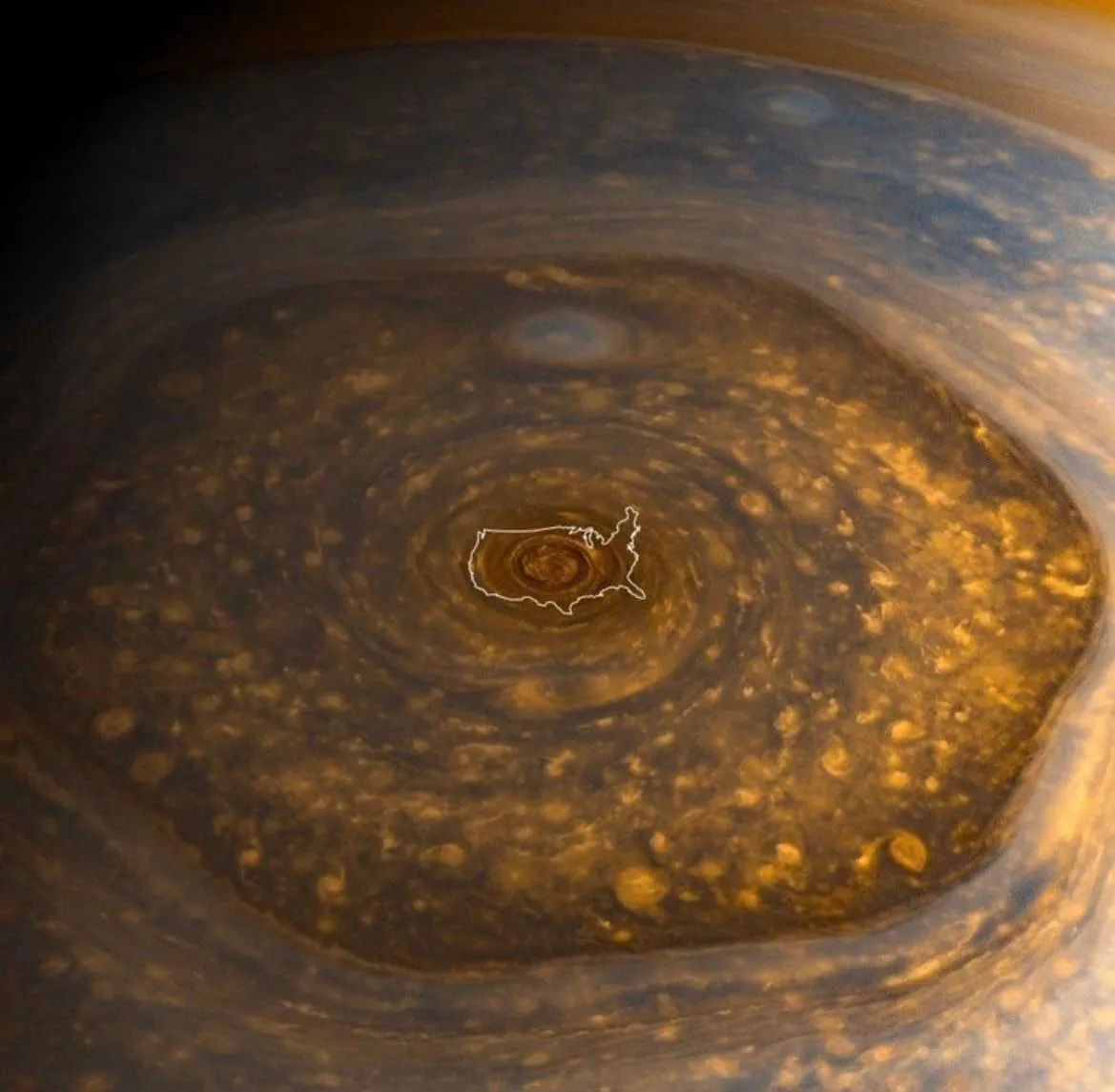Saturn's Enigmatic Hexagon: A Storm the Size of Worlds
Saturn, the ringed jewel of our solar system, holds many secrets. Among its most captivating is a bizarre and colossal atmospheric feature located at its north pole: the Hexagon. This isn't just any storm; it's a persistent, six-sided jet stream so vast that it truly defies imagination.
The Hexagon's Immense Scale
Imagine a storm that could swallow multiple Earths whole. That's the scale we're talking about with Saturn's Hexagon. This colossal jet stream spans an astonishing 30,000 kilometers (20,000 miles) across. To put that into perspective, our entire planet Earth, with its diameter of roughly 12,742 km, would fit comfortably inside with room to spare. Even more strikingly, visual comparisons often overlay the continental United States onto the storm, illustrating just how immense this feature is, covering an area equivalent to several U.S. landmasses side-by-side. Each side of this geometric wonder measures approximately 13.8 million meters (13,800 km), contributing to its impressive 29 million meter diameter.
A Cosmic Mystery
What creates such a perfect geometric shape in the chaos of a planetary atmosphere? The Hexagon is actually a stable jet stream, a powerful river of wind, that flows at speeds of about 320 kilometers per hour (200 mph). While hexagonal shapes have been observed in laboratory fluid dynamics experiments, Saturn's Hexagon remains a unique and long-lived natural phenomenon. Scientists believe that the interaction between the planet's rotation, the fluid dynamics of its atmosphere, and potentially some yet-to-be-understood forces conspire to maintain this extraordinary shape for decades, if not centuries.
The Cassini Legacy: Our Window to Saturn
Our understanding and detailed imagery of Saturn's Hexagon largely come from NASA's Cassini mission. Orbiting Saturn from 2004 to 2017, Cassini provided unprecedented views of the ringed planet, its moons, and its dynamic atmosphere. The mission's instruments captured stunning images and data, allowing scientists to study the Hexagon's structure, evolution, and the complex weather systems within it, continually deepening our appreciation for the diverse and mysterious processes at play on other worlds.
 Image: NASA/Cassini Mission - A scale comparison of Saturn's Hexagon with the continental United States, illustrating the storm's incredible size.
Image: NASA/Cassini Mission - A scale comparison of Saturn's Hexagon with the continental United States, illustrating the storm's incredible size.
Beyond Our World
The Giant Hexagon of Saturn is a powerful reminder of the incredible and often unexpected phenomena that exist within our own solar system. It challenges our perceptions of planetary weather and fluid dynamics, pushing the boundaries of what we thought possible in a natural system. As we continue to explore and learn, such discoveries inspire awe and reinforce the vastness and complexity of the cosmos waiting to be uncovered.




